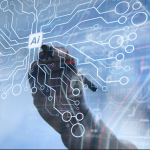Artificial Intelligence (AI) has become a buzzword in the tech industry and is slowly making its way into various sectors, including the veterinary industry. AI has the potential to transform the way veterinarians diagnose, treat and monitor animal health. With the use of AI in the veterinary industry, veterinarians can now detect illnesses earlier, offer more precise diagnoses, and provide better treatment options for their patients. In this post, we will briefly explore how AI is transforming the veterinary industry and the benefits it provides for veterinarians and their animal patients.
AI is the ability of a computer system to perform tasks that normally require human intelligence, such as visual perception, speech recognition, decision-making, and language translation. In the veterinary industry, AI is used in various ways, such as:
1. Diagnosis and treatment: AI algorithms can analyze medical images, such as X-rays, MRIs, and CT scans, to detect abnormalities or diseases. AI can also help veterinarians to make more precise diagnoses by identifying patterns in symptoms and medical histories. Moreover, automated Artificial Intelligence Microscopy has been changing the way veterinarians can detect diseases. Heska’s Element AIM is a big example of such technology where a simple fecal or urine analysis can be done automatically to detect bacteria, crystals, and parasites, including roundworm, hookworm, tapeworm, whipworm, giardia, and more. This can improve the accuracy of diagnoses and, in turn, the effectiveness of treatments.
2. Monitoring animal health: AI can monitor the health of animals by analyzing data from wearable devices, such as collars and sensors. This data can provide insights into an animal’s activity levels, sleep patterns, and overall health. Veterinarians can use this data to detect early signs of illness and prevent health issues before they become serious.
3. Animal behavior: AI can analyze an animal’s behavior and provide insights into its emotions and moods. This can help veterinarians to better understand their patients and provide more personalized care.
4. Drug discovery: AI can speed up the drug discovery process by analyzing vast amounts of data and identifying potential treatments. This can lead to the development of new drugs that are more effective and have fewer side effects.
5. Another way AI is improving pet care is through personalized nutrition plans. With data analytics, veterinarians can collect and analyze data to make a meal plan for each pet that meets its specific needs. Predictive modeling further aids in early diagnosis and disease prevention.
One example of how AI is being used in the veterinary industry is the development of a machine-learning algorithm that can detect hip dysplasia in dogs. Hip dysplasia is a common genetic disorder in dogs that can cause pain, arthritis, and mobility issues. The algorithm uses X-rays to identify the presence and severity of hip dysplasia in dogs, allowing veterinarians to diagnose the condition earlier and offer more effective treatment options.

Another example is using AI to detect and treat cancer in animals. AI algorithms can analyze medical images to detect cancerous cells and tumors, allowing veterinarians to make more precise diagnoses and provide targeted treatment options.
AI can also be used in monitoring the health of livestock, which is important for maintaining the health and safety of food products. AI can analyze data from sensors and other devices to monitor the health of livestock, detect early signs of illness, and prevent the spread of disease.
The benefits of AI in the veterinary industry are numerous. AI can improve the accuracy and speed of diagnoses, leading to better treatment outcomes for animal patients. It can also help veterinarians detect illnesses earlier and prevent serious health issues. AI can provide insights into animal behavior, allowing veterinarians to provide more personalized care. Additionally, AI can help to speed up the drug discovery process, leading to the development of more effective treatments for animal patients.
However, there are also potential challenges associated with the use of AI in the veterinary industry. One concern is the potential for bias in algorithms, which can lead to inaccurate diagnoses and treatment recommendations. Additionally, there may be privacy concerns associated with the use of wearable devices to monitor animal health.
AI is transforming the veterinary industry by improving the accuracy and speed of diagnoses, providing insights into animal behavior, and speeding up the drug discovery process.

Source:https://www.linkedin.com/pulse/revolutionizing-pet-care-how-ai-changing-veterinary








